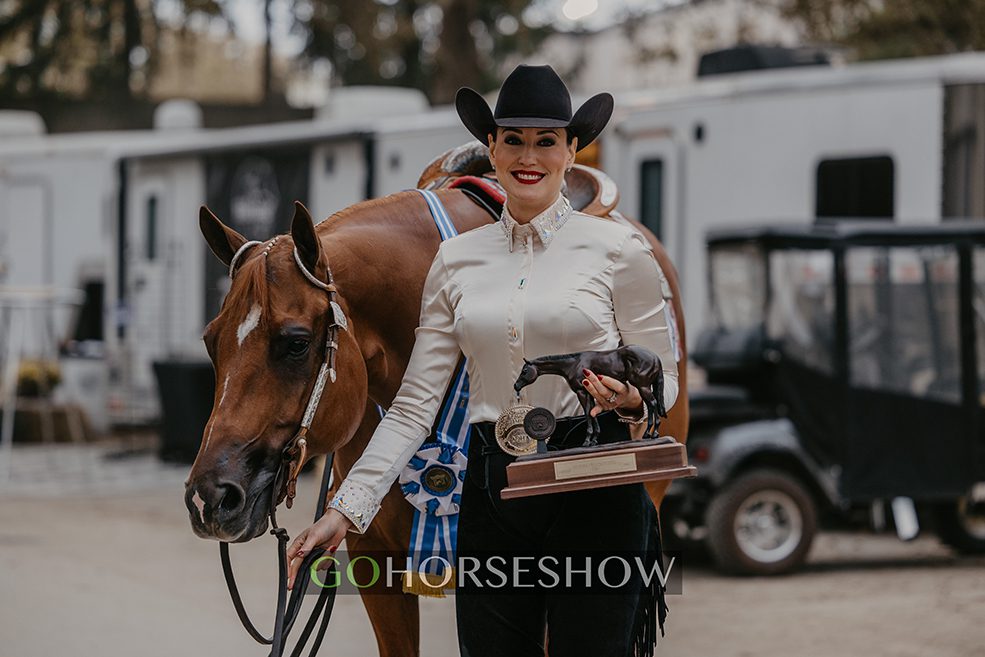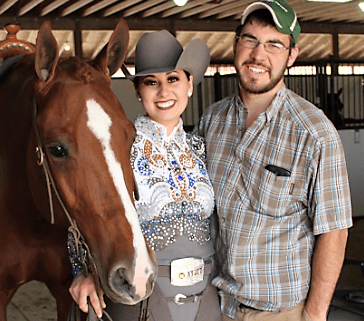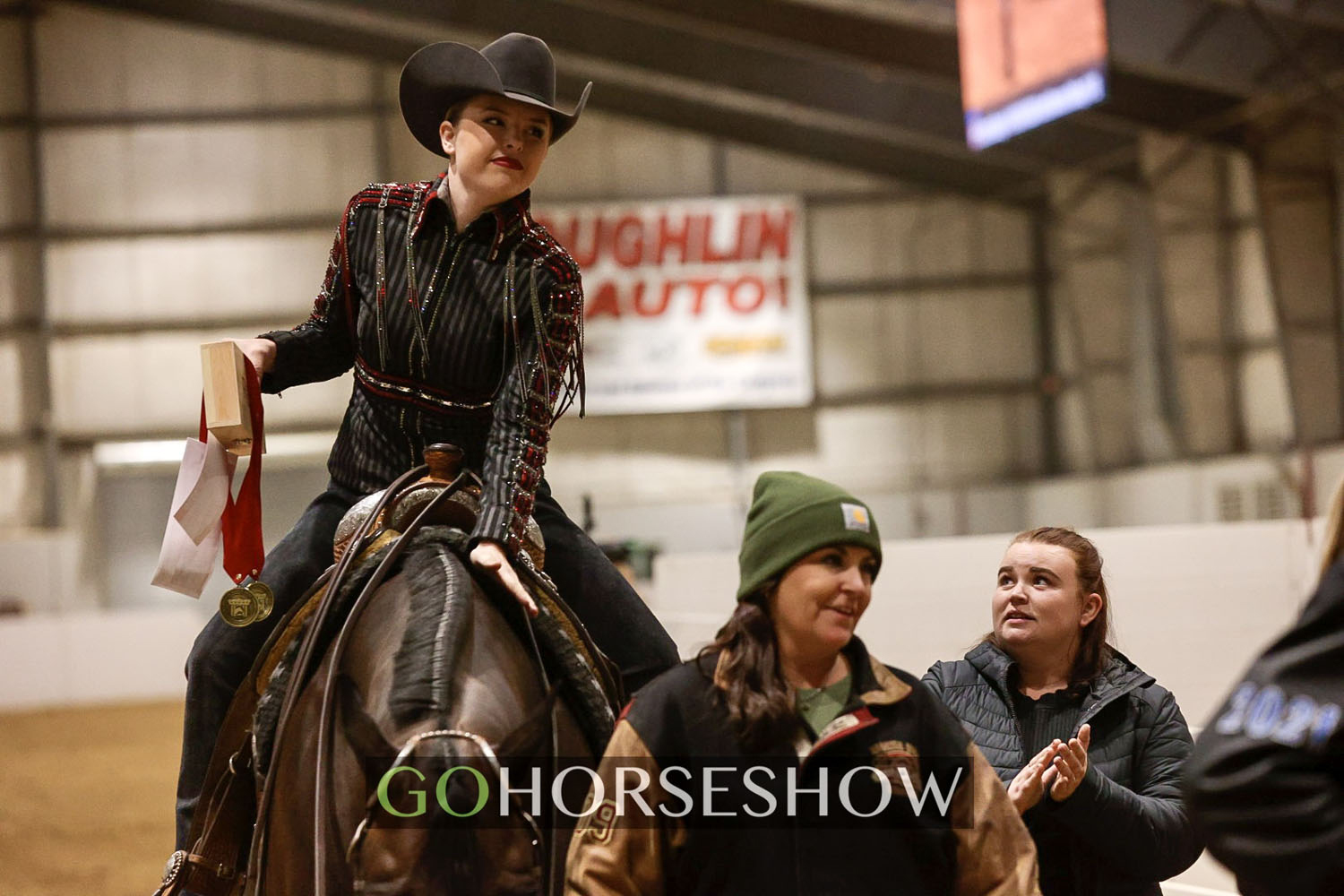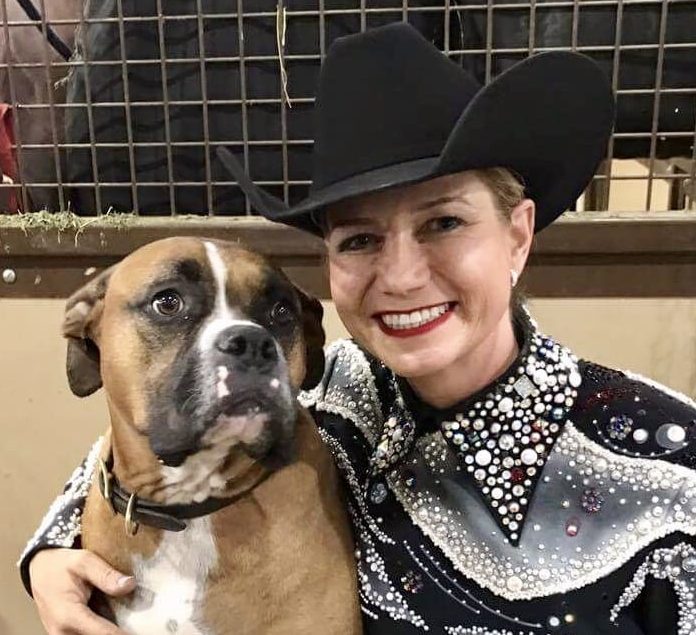In part 2 of our 4-part series, “Get the Insider’s Scoop on Learning a New Class,” we talk to multiple World and Congress champion amateur horsemanship riders about tips on trying the popular, but challenging class of horsemanship.
This class is one of the toughest and most prestigious classes to compete in on the show circuit. Nothing better than getting advice from the cut above the rest.
Be sure to check out part 1 of this popular series, where our experts gave some great advice on trying showmanship. And stay tuned for parts 2 and 3 where we’ll take a deep dive into learning trail and western riding.
Don’t Be a Passenger Top Amateur Patty Bogosh of Illinois says that horsemanship is about connection with your horse and being a horseman.
Top Amateur Patty Bogosh of Illinois says that horsemanship is about connection with your horse and being a horseman.
“The biggest piece of advice I would give someone looking to get started in the horsemanship is to remember it’s about riding – don’t be a passenger. You need to always be in show position, but show you can ride and that you’re dictating the ride, not just sitting there and taking what the horse is giving you.”
It’s not about being a still perfect statue, Bogosh adds.”It’s about showing you know what that horse is doing and what you can do to make it better, while remaining in show position and executing a correct pattern. The more often you’re connecting with your horse and making the pattern better, the easier the class becomes.”
 AQHA World & Congress champion Carey Nowacek agrees with Bogosh and says that horsemanship is a great class to learn. “I think it helps with all other classes and aspects of riding. If I had to give a tip, it would be to always stay confident and ride the horse you have that day.”
AQHA World & Congress champion Carey Nowacek agrees with Bogosh and says that horsemanship is a great class to learn. “I think it helps with all other classes and aspects of riding. If I had to give a tip, it would be to always stay confident and ride the horse you have that day.”
The class horsemanship, by definition, is the ability of the rider to execute maneuvers while maintaining confidence and keeping balance with their horse. “So, ride every step and don’t worry if it is not perfect. Show your horse confidently and it will go a long way,” Nowacek states.
Be Precise Amateur Evie Doles of St. Louis, Missouri says that it is important to really pay attention to how the pattern is drawn, as that will be the fundamental base of your pattern. “If you can make your circles even and make those parts of the pattern stand out, that’s really going to show to the judges. I know patterns can seem really intimidating, but to go out there and have fun is the most important part.”
Amateur Evie Doles of St. Louis, Missouri says that it is important to really pay attention to how the pattern is drawn, as that will be the fundamental base of your pattern. “If you can make your circles even and make those parts of the pattern stand out, that’s really going to show to the judges. I know patterns can seem really intimidating, but to go out there and have fun is the most important part.”
Amateur Morgan Jennings of Michigan says there are many small things that add up to complete the look and have success in this class.
 “It sounds simple, but the precise execution of a pattern is critical in bringing all of your well-practiced elements together. Think about bringing the drawing to life,” Jennings says. “Before you show, study the pattern and then pick points in the arena to ‘aim’ at. When you’re practicing and showing, let those markers guide the maneuvers.”
“It sounds simple, but the precise execution of a pattern is critical in bringing all of your well-practiced elements together. Think about bringing the drawing to life,” Jennings says. “Before you show, study the pattern and then pick points in the arena to ‘aim’ at. When you’re practicing and showing, let those markers guide the maneuvers.”
Here are a couple of examples explained by Jennings: Find a center line and always come back to it; If you’re making a circle, don’t cut it short. Go deep and round enough that you close the circle and set yourself up for the next maneuver; and/or find markers to stop your turns at so you close them crisp and intentionally. I have also found that this skill has helped me stay calm if a pattern goes awry somewhere in the middle – because I have a plan.
Be Patient Youth exhibitor Violet Shetler of Pennsylvania says her tip is to be patient. “I feel like a lot of people think they can get a crash course or drill something over and over and learn overnight. Everything takes time and most people you are up against have been showing that class their entire lives,” Shetler says. “My first horse didn’t do the trail so I learned it later than the rest of my classes. It didn’t matter how long I had been riding, I still made a lot of mistakes. I was blessed to be able to learn off of Sterling Assets. He is a saint and definitely helped me learn so much.”
Youth exhibitor Violet Shetler of Pennsylvania says her tip is to be patient. “I feel like a lot of people think they can get a crash course or drill something over and over and learn overnight. Everything takes time and most people you are up against have been showing that class their entire lives,” Shetler says. “My first horse didn’t do the trail so I learned it later than the rest of my classes. It didn’t matter how long I had been riding, I still made a lot of mistakes. I was blessed to be able to learn off of Sterling Assets. He is a saint and definitely helped me learn so much.”
Same goes for horses, patience is key, Violet adds. “I’ve had a couple green horses as well, and it can be frustrating showing against horses that are broke and have been showing for years. If you are patient and treat every show as a learning opportunity, it is so rewarding. So, work hard and don’t give up because you will get it with time.”
Watch the Best
Multiple Congress & World champion Olivia Tordoff of Ohio says that her biggest piece of advice for someone learning the horsemanship would be to watch videos and emulate the people you look up to. “I grew up wanting to ride like Courtney Chown and Indy Roper. So, every opportunity I had to watch them, I jumped at it. I think you can learn so much just through studying the people you look up to.”
Have Fun Veteran Amateur Tiina Volmer says that it can be intimidating showing for the first time, but just stepping into the show pen is an accomplishment in itself.
Veteran Amateur Tiina Volmer says that it can be intimidating showing for the first time, but just stepping into the show pen is an accomplishment in itself.
“Make it a fun experience and have goals for yourself and not focus on the placings. Do your practicing and homework at home. When you get to the horse show, you can show off your horsemanship skills by showing your horse to the best of his or her abilities for that day,” Volmer says. “Horses have good days and bad days just like us. You need to be aware of your horse’s strengths and weaknesses and work as a team with your horse.”
Tiina also suggests that in order to decrease the stress level before doing your pattern, make sure you know your number as the gate person will be calling them out, and you do not want to miss your order or be late to the cone. “It is disrespectful to the judges and does not give a good first impression if you are late for your pattern. Remember, we are all blessed to be able to be showing the animals we love – horses.”
In case you missed it, be sure to check out part 1, showmanship. And stay tuned for part 3 of our 4-part series, trail.








